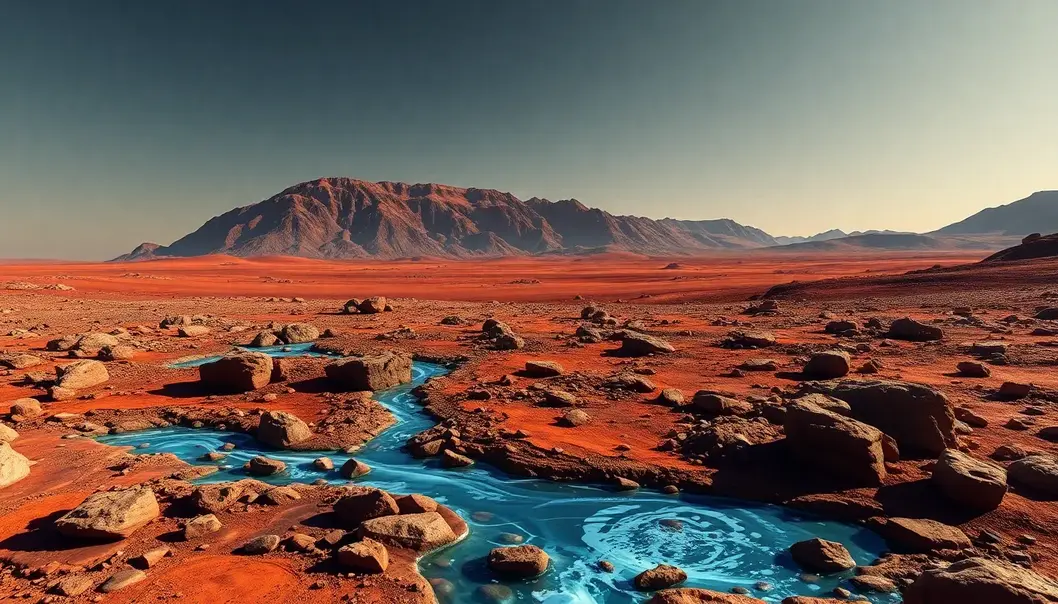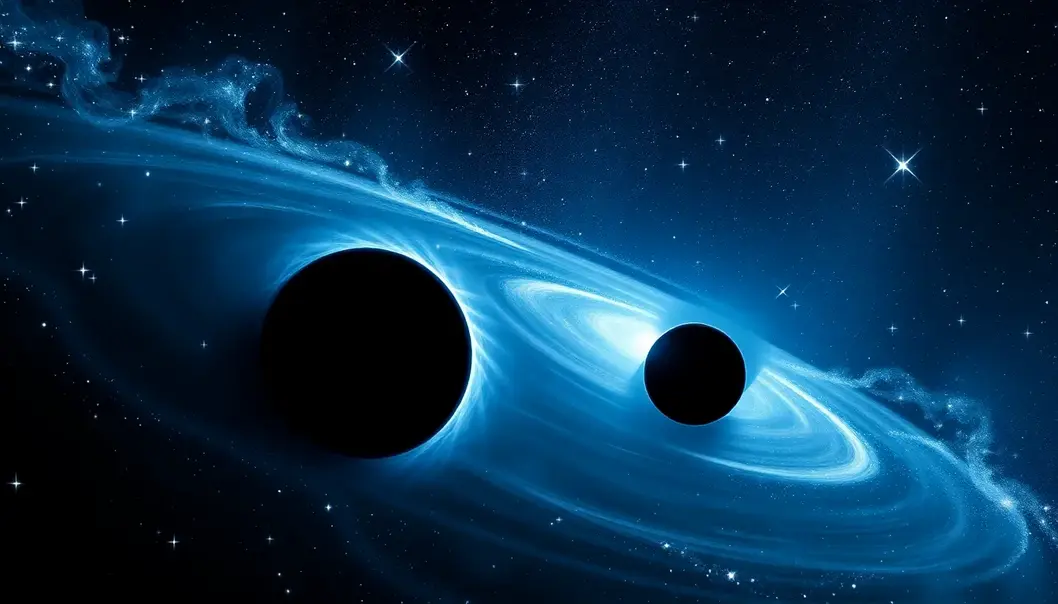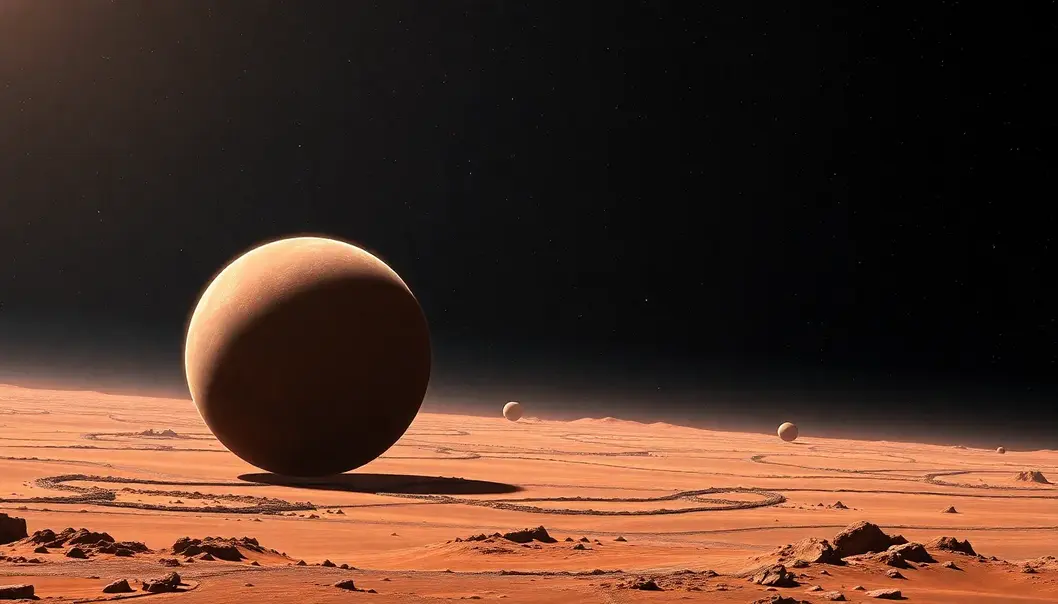Space is like the ultimate gift that keeps on giving, full of mysteries waiting to be unwrapped. Recently, some incredibly fascinating discoveries have been made that are not just expanding our understanding of the universe but are also capturing the imagination of young minds everywhere. From the persistence of water on Mars to the elusive dancing black holes, these findings are more than just scientific breakthroughs. They are stories of curiosity, adventure, and the relentless pursuit of knowledge. Ready to go on a cosmic journey through the latest and greatest in space exploration? Buckle up as we dive into these next-level celestial revelations.
Liquid Mars: The Red Planet’s Watery Secret

Mars has long been a canvas for our imaginations, painted with landscapes of dusty red deserts and futuristic colonies. Yet, as our technological eye continues to probe the universe, recent discoveries on Mars push the boundary between what was once considered impossible and what is now turned into reality. The presence of liquid water beneath its surface has catalyzed a shift in how we view our celestial neighbor. What seemed like science fiction is now paving the path for exhilarating scientific discourse.
Using advanced radar techniques, scientists have pinpointed the existence of persistent bodies of liquid water nestled beneath layers of ice and rock on Mars. These subterranean lakes are not mere puddles but potentially harbingers of a time when Mars thrived with open water bodies. While the red planet’s current environment is harshly arid and cold, these findings gesture tantalizingly toward an ancient Mars that was far more hospitable.
The detection of liquid water holds profound implications for future manned missions. Imagine astronauts treading the Martian soil, extracting this life-sustaining resource directly from underground reservoirs. Such advancements could dramatically alter mission logistics, enabling longer stays and fostering the possibility of semi-permanent settlements.
Furthermore, the prospect of water on Mars re-ignites the age-old question of life beyond Earth. While these liquid caches do not confirm the presence of life, they open waterways to explore life’s potential past presence. If life ever existed on Mars, these watery depths are prime real estate to harbor ancient microbial fossils or maybe even extant life forms clinging to survival in these hidden aquatic niches.
Our understanding of Mars as a water-rich world in its primordial days presents us with an opportunity to rethink both its past and future evolution. The water discovery may provide insights into possible ecological parallels between early Mars and Earth, suggesting a shared chapter in the solar system’s aqueous history.
For young minds peering upward in wonder, the transition of Mars from a barren wasteland to a site of interplanetary interest is foundational. It’s a reminder that the universe is full of surprises waiting to be unearthed. The potential of a mission exploring these Martian lakes isn’t just an exhilarating concept confined to science fiction. It’s budding into a conceivable reality, where those inspired by curiosity might one day find themselves on a scientific quest beneath the sands of Mars.
The Dance of the Black Holes

Black holes captivate the imagination with their enigmatic and titanic presence in the universe. Recent discoveries in astrophysics have brought to light a spectacle of such intricating beauty and gravity-defying phenomena that they are best described as a cosmic ballet. These are the mergers of black holes, observed not with traditional telescopes but with detectors attuned to the faint whispers of gravitational waves.
Gravitational waves, predicted by Albert Einstein nearly a century ago, are ripples in the fabric of space-time caused by some of the most violent and energetic processes in the cosmos. When black holes—a kind of celestial juggernaut—come spiraling together, they perform a delicate yet inevitable spiral dance. This mesmerizing alignment leads to a cataclysmic embrace that sends these ripples across the universe, and for the first time, humanity possesses the instruments to ‘hear’ these cosmic whispers.
The first detection of gravitational waves from merging black holes, announced in 2016, confirmed Einstein’s formidable prediction, marking a paradigm shift in our understanding of the universe. Scientists now listen in on these gravity waves using observatories like LIGO and Virgo which are sensitive enough to detect distortions smaller than a thousandth the diameter of a proton. Each wave detected tells the story of invisible giants colliding, allowing scientists to map the dance from worlds millions of light-years away.
These discoveries have profound implications for a young and inquisitive generation of potential astrophysicists. Black holes embody the ultimate laboratory for testing the limits of physics. With every detection, we inch closer to answering age-old questions about the universe’s birth and the nature of gravity itself. Young explorers today have the unprecedented opportunity to become pioneers in this burgeoning field, exploring realms where time and space are stretched to their limits.
The fascination doesn’t end at the collision. Post-merger, the newly formed black hole ‘rings down,’ gradually settling back into stability. This ringing carries unique signatures that help us understand black hole properties, such as mass and spin—critical in testing our theories about gravity. As these become routine, more exotic cosmic phenomena may be uncovered, leading us to questions we haven’t even thought to ask yet. Thus, while black holes may not dazzle in the conventional sense, their gravitational choreography is more than enough to illuminate the minds of young scientists with boundless possibilities.
While the cosmos may not offer the neon lights of earthly celebrations, it presents a dance floor like no other for those ready to join this celestial waltz. This is a perfect invitation for young explorers to delve deeper into the mysteries of the universe. Interested readers may want to explore more about nature’s breathtaking landscapes right here on Earth as an inspiring counterpart to the mysteries of the cosmos.
Final words
Space continues to offer new perspectives and ignite curiosity, especially among the youth. The discovery of liquid water on Mars and the cosmic dance of black holes are just the beginning. These celestial findings not only advance our scientific understanding but also serve as a reminder of the endless possibilities and adventures waiting in the universe. Whether you’re aspiring to be an astronaut or a curious onlooker, space promises vast horizons to explore.
Eager for more cosmic discoveries? Join our Astro Explorer community today and stay on top of the latest space adventures!
Learn more: https://astroexplorer.com/join
About us
Astro Explorer offers an interactive platform for space enthusiasts with articles, simulations, and community discussions to explore the wonders of the universe and keep updated on the latest discoveries.

